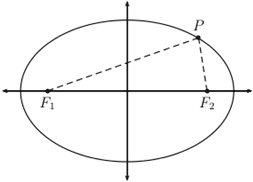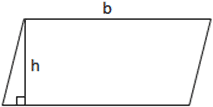Area Calculator
Square Area Calculator
Result in different units:
Area = side × side
Example:
For a square with side length of 5m, area = 5 × 5 = 25m²
Rectangle Area Calculator
Result in different units:
Area = length × width
Example:
For a rectangle with length 8m and width 3m, area = 8 × 3 = 24m²
Circle Area Calculator
Result in different units:
Area = π × radius²
Example:
For a circle with radius 4m, area = π × 4² = π × 16 ≈ 50.27m²
Triangle Area Calculator
Result in different units:
s = (a + b + c)/2
Area = √[s(s-a)(s-b)(s-c)]
Example:
For a triangle with sides 5m, 6m, 7m:
s = (5+6+7)/2 = 9
Area = √[9(9-5)(9-6)(9-7)] = √[9×4×3×2] = √216 ≈ 14.7m²
Trapezoid Area Calculator
Result in different units:
Area = ½ × (base₁ + base₂) × height
Example:
For base₁ = 8m, base₂ = 6m, height = 5m:
Area = ½ × (8 + 6) × 5 = 35m²
Sector Area Calculator
Result in different units:
Area = ½ × r² × θ
Note: θ must be in radians. If in degrees, it's converted: θ = (π/180) × angle.
Example:
For r = 4m, θ = 60°:
Area = ½ × 4² × (π/3) = ~8.38m²
Ellipse Area Calculator
Result in different units:
Area = π × a × b
Example:
For a = 5m, b = 3m:
Area = π × 5 × 3 = 47.12m²
Parallelogram Area Calculator
Result in different units:
Area = base × height
Example:
For a base of 6m and height of 4m, area = 6 × 4 = 24m²
Understanding area is essential when measuring the surface of two-dimensional shapes. Area represents the amount of space a shape covers on a flat surface—think of it as the quantity of paint needed to coat that shape. In the metric system (SI), the standard unit of area is the square meter (m²). Below, you’ll find area formulas for common geometric shapes along with real-life examples for better understanding.
Rectangle – Simple and Straightforward
A rectangle is a four-sided shape with right angles. It’s one of the easiest shapes to work with when calculating area. To find its area, you only need to know its length and width:
Formula:
Area = length × width
Real-Life Example: Farmer’s Plot
A farmer owns a perfectly rectangular plot of land. He fenced the land and measured its size:
Length: 220 ft
Width: 99 ft
Area = 220 × 99 = 21,780 sq ft
This land covers half an acre. Despite his efforts, the farmer couldn’t sell the plot—buyers expected more value per square foot due to changing unit standards.
Triangle – Flexible with Formulas
The area of a triangle can be calculated using different formulas depending on the information available. One popular method is Heron’s Formula, used when all three sides are known:
Formula:
Area = √[s(s − a)(s − b)(s − c)]
Where:
s = (a + b + c) / 2
Story: The Daughter’s Dream Pool
After selling the land, the farmer wants to build a pool. His 7-year-old daughter, obsessed with triangles, requests a triangular pool where all sides are 77 ft.
s = (77 + 77 + 77) / 2 = 115.5
Area = √[115.5 × (115.5 − 77)³] ≈ 2,567.33 sq ft
She now rules over her custom-shaped pool with joy—while her dad wonders about the pool’s practicality.
Trapezoid – Parallel Simplicity
A trapezoid has one pair of parallel sides, called bases, and two non-parallel legs. Its area depends on the length of the bases and the height (distance between them):
Formula:
Area = (base₁ + base₂) / 2 × height
Building a BMX Ramp
Now 9, the farmer’s daughter takes up BMX riding. She wants a trapezoidal ramp made using triangular elements.
Top base: 9 ft
Bottom base: 29.528 ft (or 9 meters)
Height: 9 ft
Area = (9 + 29.528) / 2 × 9 = 173.376 sq ft
Thanks to her dad’s growing skill with SI units, the ramp is a success.
Circle – Round and Classic
A circle is a closed shape where every point is equidistant from the center. Its area depends on the radius (r):
Formula:
Area = π × r²
A Crop Circle Prank
At 15, the farmer’s daughter creates a crop circle using concentric circles to prank her dad.
Radius: 15 ft
Area = π × 15² ≈ 706.86 sq ft
The prank backfires when crop-circle enthusiasts damage the farm while “investigating.”
Sector – A Slice of the Circle
A sector is a part of a circle shaped like a slice of pie, defined by a central angle and the circle’s radius.
Formulas:
If angle θ is in degrees: Area = (θ / 360) × πr²
If angle θ is in radians: Area = (θ / 2π) × πr
A Divided Decision
At 16, the farmer’s daughter creates a decorative garden shaped like a circular sector. She uses her math skills to determine how much space it’ll need, proving her growth in both age and geometry.
Ellipse – The Oval Shape
An ellipse is like a stretched circle, often seen in racetracks or orbits. It has two axes: the major axis (a) and minor axis (b)—the longest and shortest radii from the center.
Formula:
Area = π × a × b

Example: Satellite Dish
A satellite dish has an elliptical shape with:
Major radius (a): 4.5 ft
Minor radius (b): 3 ft
Area = π × 4.5 × 3 ≈ 42.41 sq ft
Perfect for catching signals from space!
Parallelogram – Slanted but Solid
A parallelogram has opposite sides that are equal and parallel, but the angles are not always right angles. It resembles a slanted rectangle.
Formula:
Area = base × height

Example: Brick Wall Design
An architect uses parallelogram tiles for a wall design:
Base = 12 in
Height = 8 in
Area = 12 × 8 = 96 sq in
Stylish and easy to measure.
Common Units of Area
Area is measured in square units, based on the measurement system used. Here are the most commonly used units:
| Unit | Area in m² |
|---|---|
| Square Meter (m²) | SI Unit |
| Hectare | 10,000 m² |
| Square Kilometer (km²) | 1,000,000 m² |
| Square Foot (ft²) | 0.0929 m² |
| Square Yard (yd²) | 0.8361 m² |
| Acre | 4,046.9 m² |
| Square Mile (mi²) | 2,589,988 m² |
